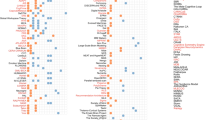Abstract
It is widely agreed among contemporary philosophers of mind that science leaves us with an ‘explanatory gap’—that even after we know everything that science can tell us about the conscious mind and the brain, their relationship still remains mysterious. I argue that this agreed view is quite mistaken. The feeling of a ‘explanatory gap’ arises only because we cannot stop ourselves thinking about the mind–brain relation in a dualist way.
Similar content being viewed by others
Notes
Putting it like this might make it seem I am committing materialists to ‘type-identity’ and ignoring the possibility of ‘non-reductive physicalism’. But this is not my intention. Suppose, in line with non-reductive physicalism, that a conscious kind like pain metaphysically supervenes on physical properties without being identifiable with any of them—it is ‘variably realized’, by C-fibres in humans, but by different physical properties in octopuses, extra-terrestrials, androids, and so on. Then I take it that the relevant variably realized conscious kind must have a nature which explains why it so supervenes on physical properties. For example, it may be identical with the higher-order property of having some property which plays a certain causal role, or it may be a determinable property with a range of physical determinates, or it may be a disjunctive property with a range of physical disjuncts, and so on. And so, in any such case, we can identify the conscious property with the generic higher-order/determinable/disjunctive property, even if we can’t identify it with any strictly physical property. (I shall illustrate some of the arguments that follow by assuming such identities as that of pain with the ‘firing of C-fibres’. But this is an expository convenience. In truth, I am neutral about which kinds of material states—generic or more strictly physical—mental states are identical with.)
Similarly it is a matter for scientific investigation whether specific conscious states are identical with specific higher-order/determinable/disjunctive states.
Note that I am here reading ‘the intuition of dualism’ as referring to a psychological attitude, not the propositional content of that attitude. Of course the content of the intuition would support dualism—if it were granted. However the issue at hand is the different one of whether the psychological fact that people intuitively believe dualism is evidence for dualism.
On some accounts of phenomenal concepts, this accompaniment is essential to the exercise of phenomenal concepts, while on others it is merely a frequent corollary. This difference will not matter in the present context.
References
Block, N., & Stalnaker, R. (1999). Conceptual analysis, dualism, and the explanatory gap. Philosophical Review, 108, 1–46.
Bloom, P. (2004). Descartes’ baby. New York: Basic books.
Chalmers, D. (1996). The conscious mind. Oxford: Oxford University Press.
Chalmers, D., & Jackson, F. (2001). Conceptual analysis and reductive explanation. Philosophical Review, 110, 315–61.
Goff, P. (2010). A posteriori physicalists get our phenomenal concepts wrong. Australian Journal of Philosophy.
Jackson, F. (1986). What Mary didn’t know. Journal of Philosophy, 83, 291–295.
Kripke, S. (1980). Naming and necessity. Oxford: Blackwell.
Levine, J. (1983). Materialism and qualia: the explanatory gap. Pacific Philosophical Quarterly, 64, 354–361.
Melnyk, A. (2003). ‘Papineau on the Intuition of Distinctness’ SWIF Forum on Thinking about Consciousness http://lgxserver.uniba.it/lei/mind/forums/004_0003.htm
Nida-Rümelin, M. (1998). On belief about experiences: an epistemological distinction applied to the knowledge argument. Philosophy and Phenomenological Research, 58, 51–73.
Papineau, D. (1993). Philosophical naturalism. Oxford: Blackwell.
Papineau, D. (2002). Thinking about consciousness. Oxford: Oxford University Press.
Papineau, D. (2007). Kripke’s proof is ad hominem not two-dimensional. Philosophical Perspectives, 21, 475–494.
Papineau, D. (2008). Phenomenal and perceptual concepts. In T. Alter & S. Walter (Eds.), Phenomenal concepts and phenomenal knowledge. Oxford: Oxford University Press.
Rorty, R. (1979). Philosophy and the mirror of nature. New Jersey: Princeton University Press.
Sundström, P. (2008). Is the mystery an illusion? Papineau on the problem of consciousness. Synthese, 163, 133–143.
Yablo, S. (2000). Textbook Kripkeanism and the open texture of concepts. Pacific Philosophical Quarterly, 81, 98–122.
Author information
Authors and Affiliations
Corresponding author
Rights and permissions
About this article
Cite this article
Papineau, D. What Exactly is the Explanatory Gap?. Philosophia 39, 5–19 (2011). https://doi.org/10.1007/s11406-010-9273-6
Received:
Accepted:
Published:
Issue Date:
DOI: https://doi.org/10.1007/s11406-010-9273-6




